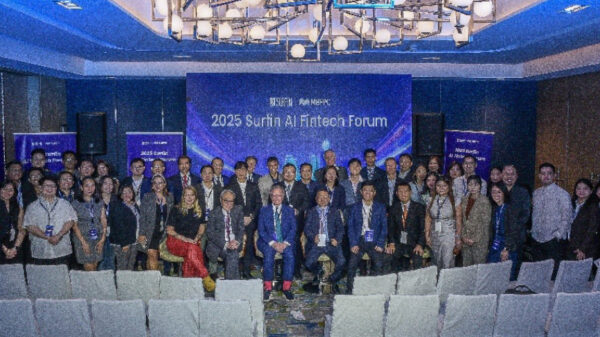Information Technology decision makers (ITDMs) believe wireless networks to be the most vulnerable element of the IT infrastructure, according to a new survey from Fortinet. Nearly half (49%) of respondents ranked wireless networks as most exposed from a security standpoint, in contrast to just 29% for the core network.
The Fortinet survey also reveals that insufficient wireless security is a concern for almost all (92%) of the CIOs polled; hardly surprising given that more than one-third of the enterprise wireless networks put in place for internal employees, do not have the basic security function of authentication in place.
The findings come from an independent survey of over 1,490 IT decision makers at 250+employee organizations around the world.
The survey reveals that nearly half of ITDMs (48%) consider loss of sensitive corporate and/or customer data the biggest risk of operating an unsecured wireless environment.
A majority or 72% have adopted a cloud approach to management of their wireless infrastructure and 88% trust the cloud for future wireless deployment.
Forty-three percent of ITDMs polled provide guest access on their corporate wireless networks; 13% of these organizationsdo so without any controls whatsoever.
Wireless Networks at Risk
According to the survey, wireless networks are ranked as the most vulnerable IT infrastructure, with the highest proportion of ITDMs (49%) placing it in their top two. Respondents positioned wireless as significantly more vulnerable than core networking infrastructure, with just 29% of ITDMs ranking this highly. Databases (25%), applications (17%) and storage (11%) infrastructures were considered amongst the least susceptible from a security standpoint.
In addition, 37% of global ITDMs polled do not have the most basic wireless security measure of authentication in place. A significant 29% and 39% of enterprises respectively, overlook firewall and anti-virus security functions when it comes to wireless strategies.
Other security measures deemed critical to core infrastructure protection, such as IPS (deployed by 41%), application control (37%) and URL filtering (29%), play a part in even fewer wireless deployments.
When considering the future direction of their wireless security strategies, the majority of respondents said they would maintain focus on the most common security features – firewall& authentication, while demand for more security is emerging with 23%prioritizingcomplementary technologies – IPS, anti-virus, application control and URL filtering – to guard against the full extent of the threat landscape.
Concern High over Insufficient Wireless Security
Of the ITDMs surveyed, 83%are concerned their existing wireless security is not sufficient, with CIOs reporting the highest level of concern at 92%.Despite deploying the highest level of security of all the regions surveyed, ITDMs across APAC are the most concerned about their wireless security with 44% stating they are very concerned, in contrast to 30% in the Americas, and 20% in EMEA.
Globally, ITDMs reported varying confidence levels in wireless security; China tops the board with 71% ‘very concerned’, compared to just 13% in Japan.
The findings suggest that increased security awareness leads to higher levels of concern, with respondents in the top two ‘concerned’ countries – China and India – deploying more wireless security functions on average, than the two least ‘concerned ‘countries – Italy and Japan.
Risk of Data Loss Tops Poll
When asked to cite the risks of operating an unsecured wireless network, 48% of ITDMs considered loss of sensitive corporate and/or customer data as the biggest risk to their organization. This was highest at 56% in APAC, in contrast to the Americas at 45% and EMEA 42%.
The next highest risk, industrial espionage, was cited by just 22% of ITDMs, followed by non-compliance to industry regulations (13%), with service interruption and damage to corporate reputation ranked equal last (9%).
Cloud Management Becomes the Norm
Wireless infrastructure governed by a premise-based controller is a thing of the past according to the findings, with on-site wireless controllers the least common form of management (28%).
This trend for cloud-based management looks set to grow further, with only 12% of enterprise ITDMs refusing to trust the cloud for such critical management in the future.
Of the cloud-ready respondents, 58% would want to use a private cloud infrastructure for wireless management and 42% would outsource to a third party managed services provider. Fourteen percent of those considering outsourcing would only do so provided it is hosted in the same country, leaving 28% happy to embrace wireless management as a public cloud service regardless of geography.
‘Totally Open’ Guest Access
Nearly half (43%) of ITDMs polled provide guest access on their corporate wireless networks, with 13% of these organizations doing so without any controls whatsoever.
The most common form of guest security access on corporate wireless networks is a unique and temporary username and password (46%), ahead of a captive portal with credentials (36%).
“The survey findings indicate that despite the growth in mobility strategies, wireless security has simply not been a priority for enterprises to date,” said John Maddison, vice president of marketing products at Fortinet. “As advanced persistent attacks increasingly target multiple entry points, and the cloud becomes more prevalent, it’s not an oversight organizations should risk any longer.”
“It’s positive to see IT Leaders beginning to recognize the role wireless security plays in protecting their critical business assets, yet there is more to be done. As IT strives to balance the need for strong network security with ubiquitous connectivity, wireless must be considered as part of a holistic security strategy to ensure broad and consistent protection for users and devices over wired and wireless access.














































































































